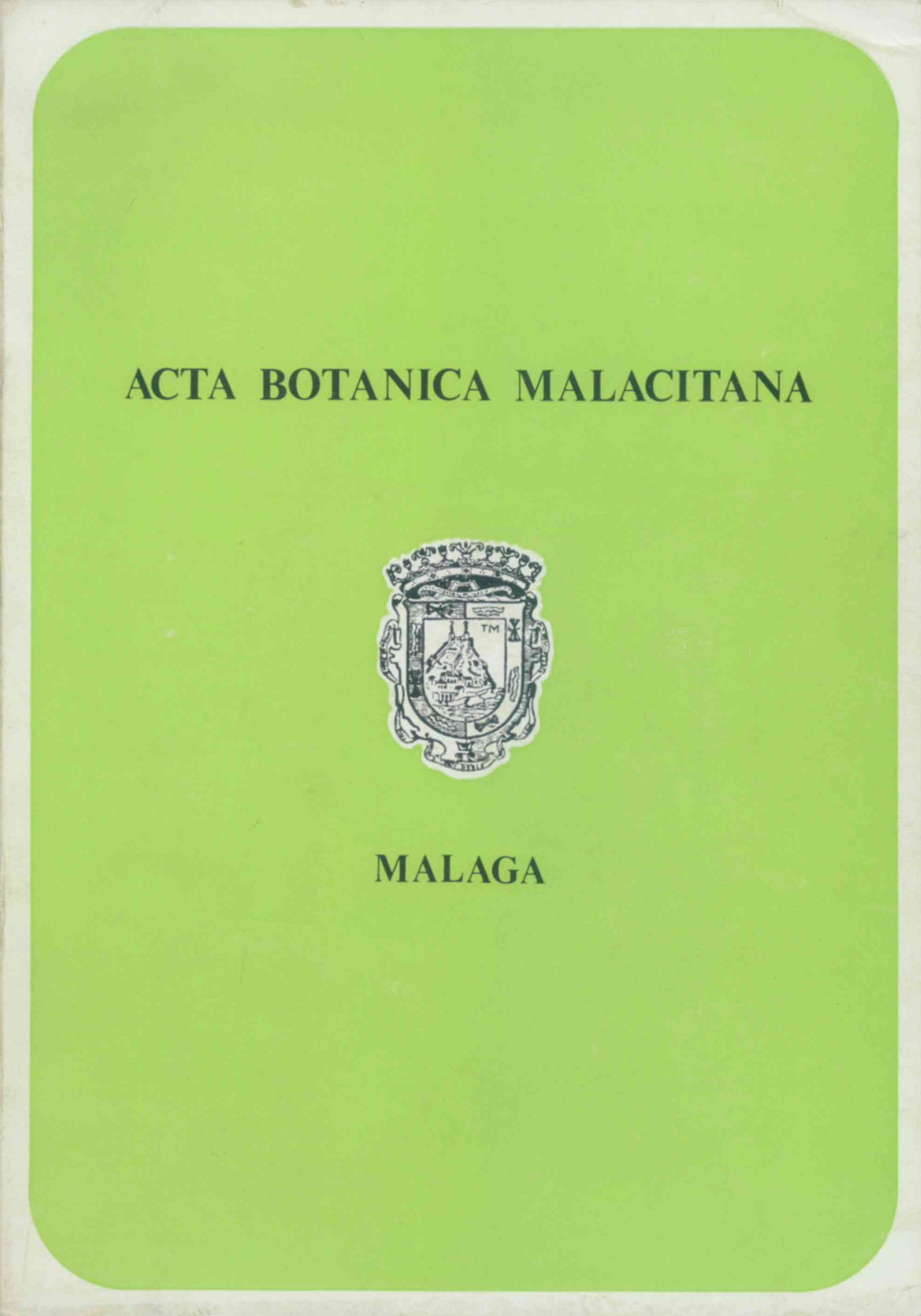On the terrestrial communities of wandering lichens (Sphaerothallio-Xanthoparmelion vagantis Al. Nova)
DOI:
https://doi.org/10.24310/Actabotanicaabmabm.v4i.9685Keywords:
.Abstract
A new alliance of.vangant lichens, living in places which are physiologicaly arid (thermo or crioarid) due to continentality or higrothermic desertization and also strongly windy end euthrophic, is proposed. Within this alliance, we describe a new association (Sphaerotha- llietum jruticuloso-foliaceae) which grows in Spain in the Iberian Paramera vegetation level, in the clearings of the thyme and grassland communities (Festuco-Poion ligulatae), between 1.200 and 1.400 m. above sea level, and which an undoubtedly exceed the Mediterranean area, probably finding an optimum in the Irano-Turanian Region. The bibliographic data allow us to deduce its presence in the mountains of Astrakan and Tauria (URSS). In the alliance the association (Parmelietum vagantis) heavily amended, is also included. Ecologically and floristically related communities are discussed as well.
Downloads
Metrics
References
BARRENO, E. & CRESPO, A. —1978— Notas para la flora lique?nica de la Peninsula Ibe?rica. I. Sphaerothallia Nees (Lecanoraceae). III Simposio de Bota?nica Criptoga?mica, octubre, Ma?laga (en prensa).
CULBERSON, C. F. & all. —1977— Second Supplement to Chemical and Botanical guide to lichen products — American Briological and Lichenological Society, San Luis.
ELENKIN, A. —1901— Lichenes florae Rossiae et regionum confinium orientalium Acta Horti Ptropol., 19 (1): 1-52.
ELENKIN, A. —1901— La manne liche?nique (Lichen esculentus Pall.)— Acta Horti Petropol., 19 (2): 53-99.
ELINKIN, A. —1906-1911— Linchenes florae Rossiae Mediae, I, II, III, IV, Moscu?.
FOLLMANN, G. & CRESPO, A. —1974— Observaciones acerca de la distribucio?n de li?quenes espan?oles. II. Spharothallia fruticulosa (Eversm.) Follm. & Crespo— Anal. Inst. Bot. Cavanilles, 31(1): 325-333.
GALUN, M. —1970— The lichens of Israel. Israel Academy of Sciences and Humanities, Jerusalem.
GALUN, M. & GARTY, J. —1972— Lichens of North and Central Sinai —Israel J. Bot., 21: 243-254.
HALE, M. E. —1974— Bulbothnix, Parmelina, Relicina and Xanthoparmelia, four new genera in the Parmeliaceae (Lichenes) — Phytologia, 28 (5): 479-490.
KLEMENT, 0. —1955— Prodrome der mitteleuropdischen Flechtengesellschaften — Feddes Repert: , 135: 5-194.
KREMPELHUBER, A. —1867— Lichen esculentus Pall., urspriinglich cine steinbewohnende Flechte —Verb. Zool. —Bol. Ges. Wien, 17: 601-606.
LLIMONA, X. —1974— Las comunidades de li?quenes de los yesos de Espan?a — Univ. Barcelona, Secretari?a de Publicaciones.
MATTICK, F. —1951— Wuchs—und Lebensformen, Bestand—und Gesellschaftsbildung der Flechten — Bol. Jahrbiicher, 75: 378-424.
MERESCHOKOVSKY, C. de —1911— Excursion liche?nologique dans les steppes Kirghises (Mont Bogdo)— Travaux de la Socie'te' des Naturalistes de l'Universite? impe?riale de Kazan, pp. 1-43.
MERESCHKOSVSKY, C. de —1913— Notes critiques sur quelques spe?ces de Lichens de la Crime?e — Candollea, 1: 491-499.
MERESCHKOVSKY, C. de —1921— Diagnoses of some lichens—Ann. Magaz. Nat. Hist., 9: 246-290.
POELT, J. —1969— Bestimmungsschlu?ssel europdischer Flechten, Lehre
RIVAS-MARTINEZ, S., ARNAIZ, C., BARRENO, E. &CRESPO, A. —1977— Apuntes sobre las provincias corolo?gicas de la Peninsula Ibe?rica e Islas Canarias— Opuscula Botanica Pharmaciae Complutensis, 1-48.
STEINER, J. —1970— Lichenes Persici coll. a cl. Consule Th. Strauss —Am. Mycol., 8: 212- 245.
SZATALA, 0. —1957— Prodromus einer Flechtenflora des Irans — Ann. Hist.-Nat. Mus. Nat. Hungarici, 8n. ser.: 101-154.
TAVARES, C. N. —1959— Lichens from Spain — Rev. Fac. Ci. Nat., 7 (1): 53-64.
TOMASELLI, R. —1956— Introduzione allo studio della Fitosociologia, Milan.
WEBER, W. A. —1978— Environmental modification and lichen taxonomy. In .Lichen Ecology. (M.R.D. Seaward, eds.): 9-30. Academic Press.
Downloads
Published
How to Cite
Issue
Section
License
Those authors who publish in this journal accept the following terms:
a. The authors will retain their copyrights and guarantee the journal the right of first publication of their work, which will be simultaneously subject to the Creative Commons Attribution-Non-commercial 4.0 license whose full text can be found at <http: // creative commons .org / licenses / by-nc / 4.0> that allows third parties to share the work as long as its author and its first publication are indicated, and as long as it is not for commercial purposes.
b. Authors may adopt other non-exclusive licensing agreements for the distribution of the version of the published paper (e.g., deposit it in an institutional telematic file or publish it in a monographic volume) provided that the initial publication in this journal be indicated.
c. Authors are allowed and recommended to disseminate their work through the Internet (e.g., in institutional telematic archives or on their websites) before and during the submission process, which can produce interesting exchanges and increase citations of the published work. (See The effect of open access)







1.png)
